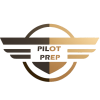Yes, you can wear glasses as a pilot!
One of the most common questions I am asked by aspiring pilots is can pilots wear glasses? In short, the answer is yes. In fact, I wear glasses! Pilots can wear glasses, but there are specific requirements that must be met, particularly in the UK. As pilots, you are responsible for the safety of your passengers, crew, and aircraft. Therefore, you must meet specific medical requirements to ensure that you are fit to fly. Let’s explore the criteria for a UK Class 1 medical and renewal.
Firstly, let’s start with the basics. The UK Civil Aviation Authority (CAA) is responsible for ensuring that pilots meet the medical standards required to fly. There are three classes of medical certificates: Class 1, Class 2, and LAPL (Light Aircraft Pilot License) medical certificates. Commercial pilots need a Class 1 medical certificates, while private pilots only need a Class 2 medical certificates. LAPL medical certificates are for pilots flying light aircraft. If you want to fly for the airlines, you will need a Class 1.
Initial Class 1 Medical (your first and strictest medical)
Let’s look at the requirements for a UK Class 1 medical certificate. The CAA says, you, as a pilot, must have “normal colour vision and visual acuity in each eye separately.” This means that you must be able to read the letters on the Snellen chart with each eye individually, and both eyes together. You will also take an Ishihara test to ascertain whether or not you are colourblind. Pilots must have a visual acuity of 6/6 or better in each eye separately and 6/9 or better in both eyes together. However, if your visual acuity is worse than 6/9 in both eyes together, they can still qualify for a Class 1 medical certificate, provided that they can see at 6/12 or better with one eye.
The CAA allows pilots to wear corrective lenses to meet the visual acuity requirements. However, pilots must meet specific requirements for the issue of an initial Class 1 medical. According to the CAA, “spectacle correction should not exceed plus or minus 5 diopters.” Additionally, the lenses must be “non-tinted and non-reflective” and must have “no visible scratches or blemishes that would interfere with vision.” The frames must also be “well-fitting” and must not have any “protrusions or sharp edges.” Contact lenses are also acceptable, as long as they are comfortable and do not cause any visual disturbance. Personally, I have dry eyes and contact lenses are not suitable for me to use when I’m flying.
Class 1 Medical Renewal
The requirements for a renewal of a Class 1 medical are slightly different. You must undergo a basic eye examination, which includes a Snellen chart test and a visual field test. The visual field test is used to check for any defects in the peripheral vision. The visual acuity requirement for a renewal is the same as for an initial Class 1 medical (6/6 or better in each eye separately and 6/9 or better in both eyes together). However, if a pilot’s visual acuity has deteriorated since their last medical examination, you may still qualify for a renewal as long as you can see at 6/12 or better with one eye.
Pilots with certain medical conditions that affect their vision may not be able to fly. For example, pilots with uncontrolled glaucoma or diabetic retinopathy may be disqualified from flying. Additionally, pilots with a history of certain eye surgeries or procedures, such as LASIK or corneal transplant will have to wait before flying again. You need to consult an AME (Aviation Medical Examiner) for a precise time period but expect at least 6 weeks as a minimum.
Keep your glasses nice and clean
In summary, you can wear glasses and still be a pilot as long as you meet the specific requirements set by the UK Civil Aviation Authority. You will also need to carry prescription sunglasses and a spare pair of glasses at work. Take care of your eyes, you only have one set of them! Now you know you can wear glasses, make sure you nail why you want to be a pilot. Happy flying!

